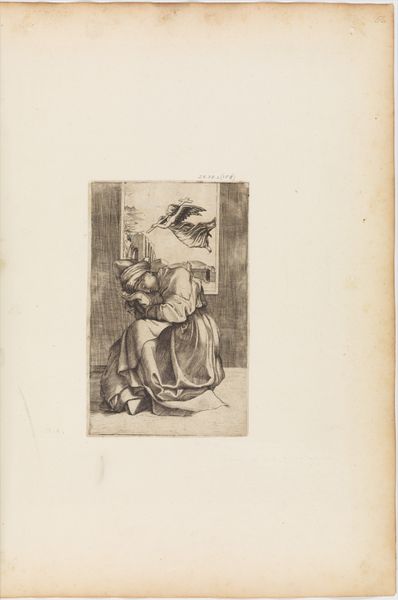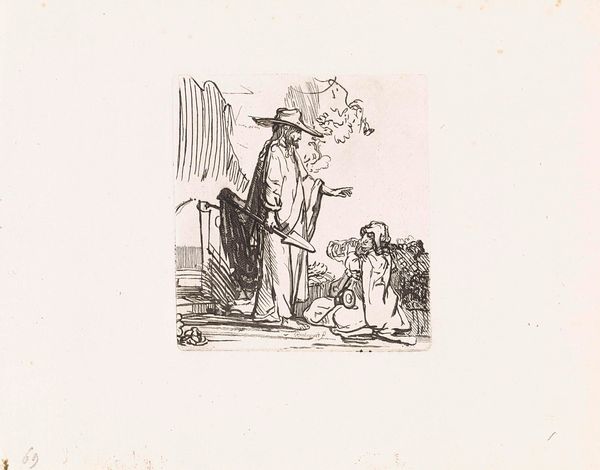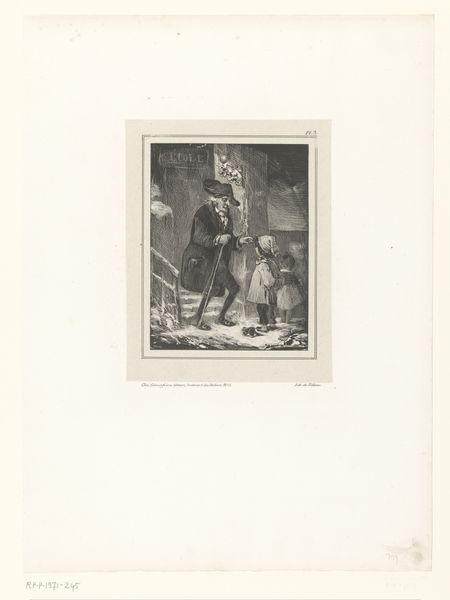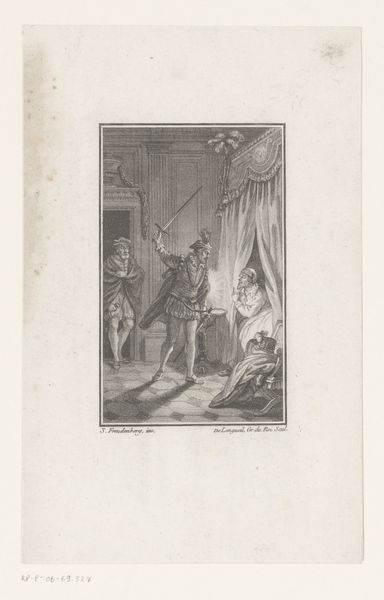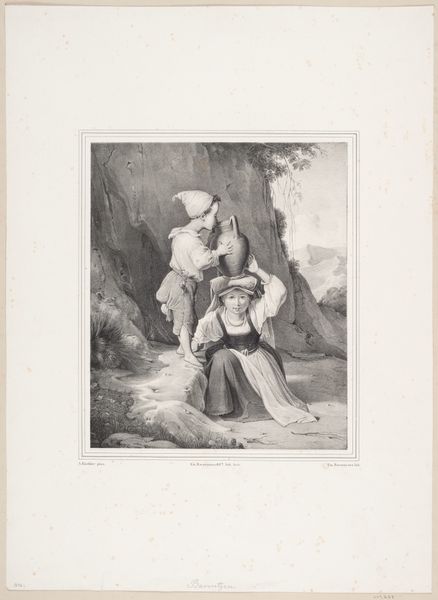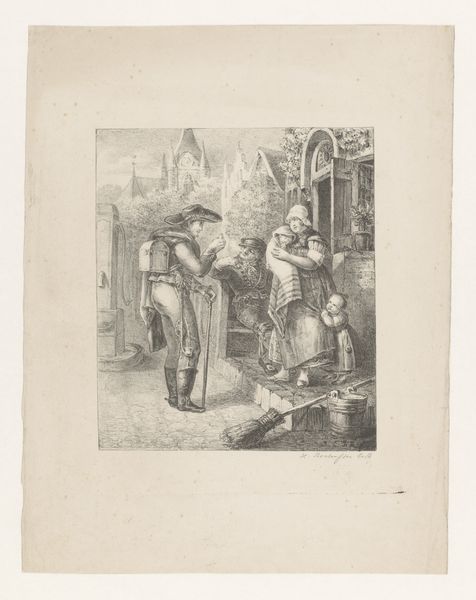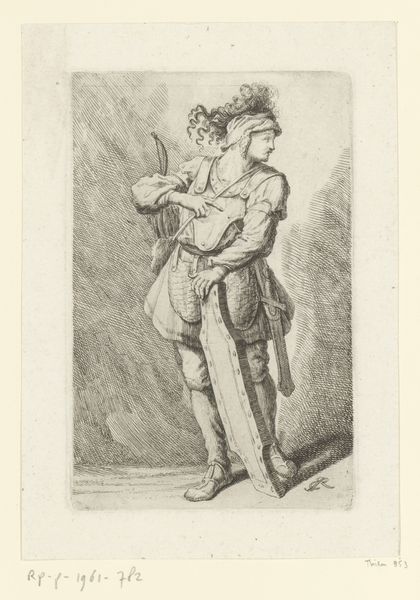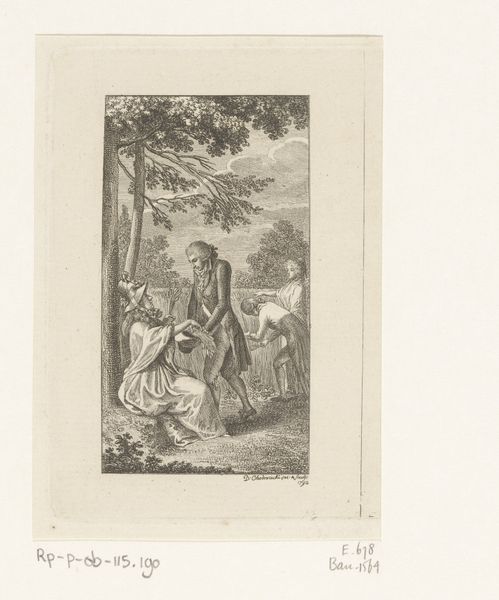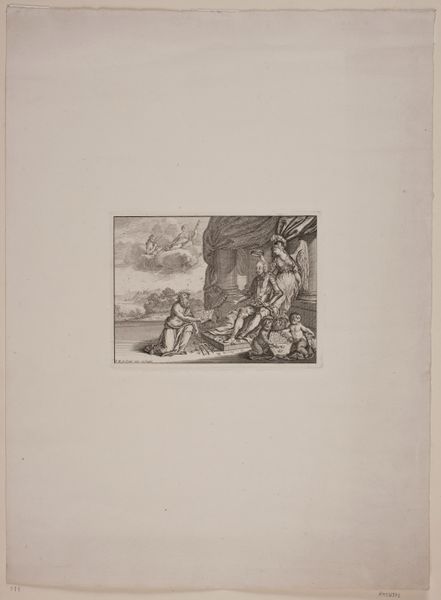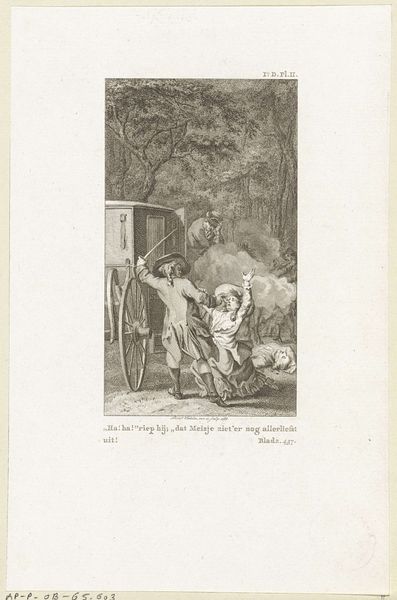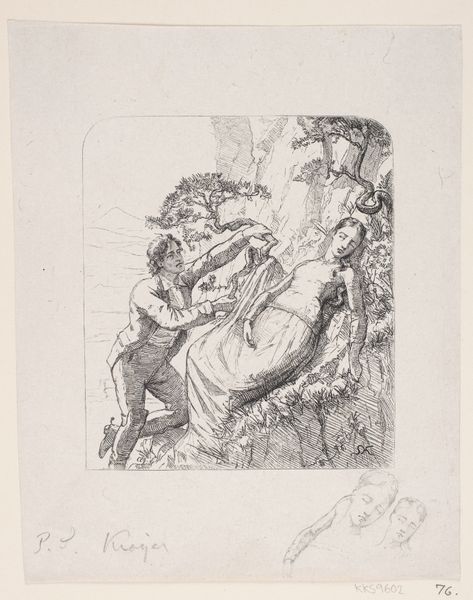
Vrouw strekt haar armen uit naar dronken jachtopziener 1828
0:00
0:00
nicolastoussaintcharlet
Rijksmuseum
drawing, print, etching
#
portrait
#
drawing
# print
#
etching
#
old engraving style
#
personal sketchbook
#
romanticism
#
pen-ink sketch
#
genre-painting
Dimensions: height 360 mm, width 269 mm
Copyright: Rijks Museum: Open Domain
Editor: This is Nicolas Toussaint Charlet’s "Vrouw strekt haar armen uit naar dronken jachtopziener", which translates to "Woman stretching her arms towards a drunken game warden," made around 1828. It's an etching, so a print on paper. It strikes me as a scene rife with tension – what can you tell me about the possible social commentary within this work? Curator: Well, considering this work emerged in the early 19th century, we need to look at the societal power dynamics between genders and classes at that time. Here we have what appears to be a working-class woman confronting a game warden, someone holding authority, likely after he’s indulged in alcohol. Consider, what does it signify that the artist chose this interaction to depict? Editor: It feels like there's a potential subversion of power. The woman, despite her position, seems to be the one holding a form of control, almost scolding him. Curator: Precisely! Charlet might be critiquing the abuse of power prevalent within the aristocratic structures. Notice how he portrays the game warden; disheveled, and dependent. Now contrast this with the active and grounded stance of the woman. Do you think this resonates with any contemporary struggles? Editor: Absolutely, it connects with today’s narratives about those in power being held accountable, especially concerning class and gender disparities. The artwork shows a reversal of expected roles, where the traditionally vulnerable challenges authority. Curator: Exactly, and the "drunkenness" can be a metaphor for the corruption or moral decay of the establishment. This image, though historical, allows us to question these imbalanced societal structures and echo these issues which are consistently prevalent within today’s climate. Editor: So, this etching provides us not just with an observation of 19th-century life, but serves as a historical mirror reflecting today’s on-going power dynamics. I'll never see genre paintings the same again. Curator: It demonstrates the potential for art to encourage dialogues about change, intersectionality, and challenge the viewer to think critically. This isn't merely an etching but an ongoing narrative.
Comments
No comments
Be the first to comment and join the conversation on the ultimate creative platform.


